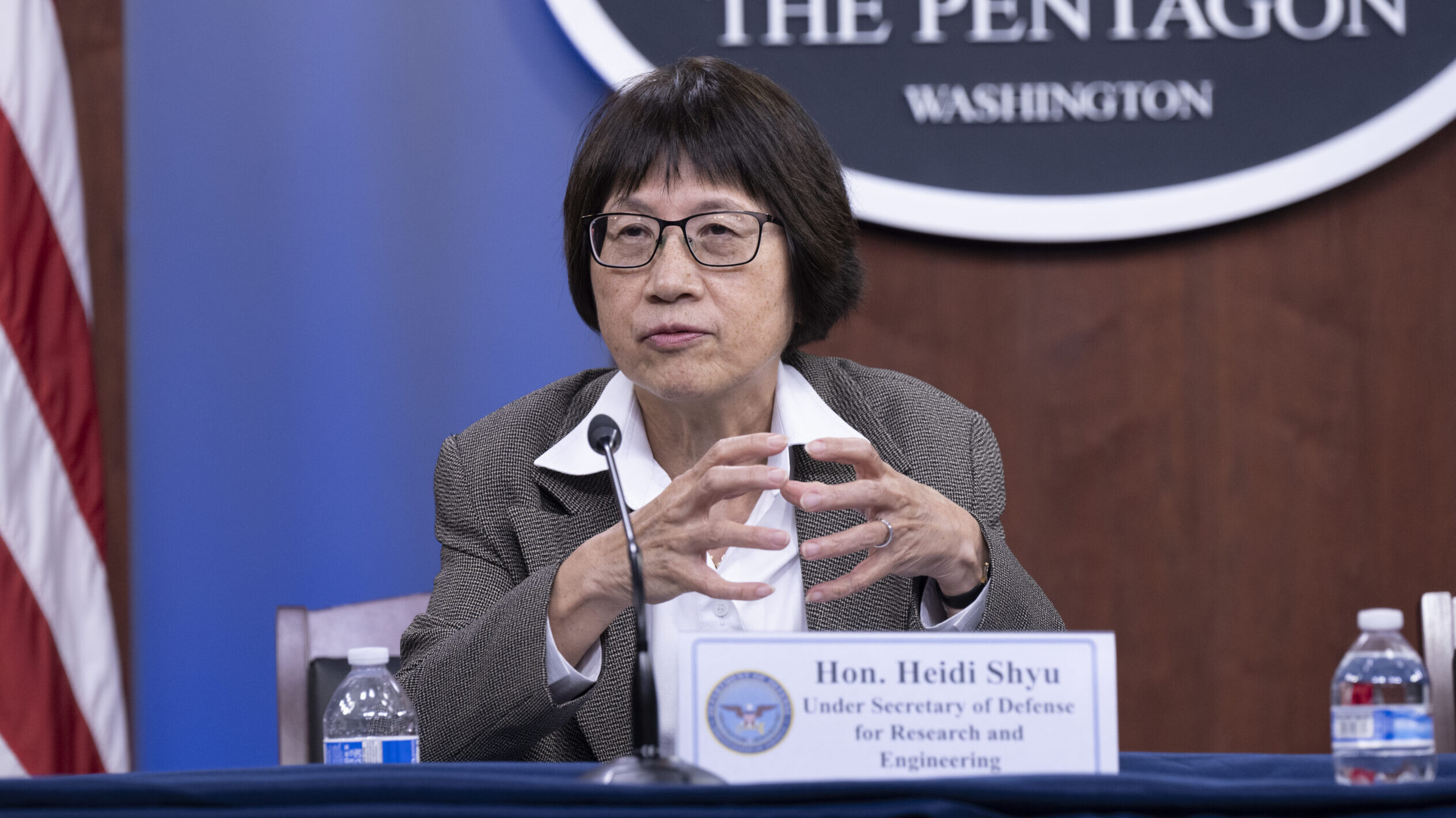
Under Secretary of Defense for Research and Engineering Heidi Shyu speaks during a press briefing announcing a university-affiliated research center initiative with historically Black colleges and universities, the Pentagon, Washington, D.C., June 27, 2022. (DoD photo by Lisa Ferdinando)
WASHINGTON — The Pentagon’s forthcoming science and technology strategy will showcase how the department plans to improve its joint warfighting operations, while also moving ahead on rapid prototyping, according to a senior defense official.
The National Defense Science and Technology Strategy will be released “very shortly,” Heidi Shyu, undersecretary of defense for research and engineering, said on Thursday at an NDIA event. Without giving a date, she added that the strategy is “sitting on the secretary of defense’s front desk now.”
Shyu said the strategy, informed by the broaderNational Defense Strategy, will hit on three main focus areas: joint operations, rapid prototyping and science and technology workforce development. Breaking Defense last year obtained a memo laying out 14 technologies DoD considered “critical” and was the first to report that the Pentagon was developing a science and technology strategy that aimed to strengthen the US’s military technology superiority.
“Everything we’ve been doing is very much focused in on the joint warfighting capabilities and what we need to do to fight as a joint force,” Shyu said on Thursday. “So the capability that we need to develop in that arena is what’s driving a lot of our focus, especially in the prototyping and experimentation phase.”
That last part hits on an effort spearheaded by Shyu that was launched last year called the Rapid Defense Experimentation Reserve, or RDER, aimed at accelerating promising technologies to combatant commanders and addressing joint capability gaps. The first round of experiments are set to launch this year and will be focused on long-range fires.
The Defense Department in its fiscal 2024 budget request included $145 billion for its research and development efforts, its largest request to date, to fund things like rapid experimentation and Joint All Domain Command and Control efforts. For RDER specifically, the department wants $687 million, almost twice what it requested the previous year.
Shyu said her office is working with its acquisition and sustainment partners to “take a look at the capabilities that we are developing and demonstrating” as it works to rapidly field prototypes. She added her office also has several efforts underway targeted at developing its science and technology workforce, including a “fee-for-service” scholarship program.
“It’s a fee-for-service in the sense that if we paid for four years of your scholarship, you owe us four years of service within one of our DoD entities,” she said. “I will tell you that we have a very high retention rate even after the students fulfill their commitment to us. This has been a very successful broker.”
At the same time, DoD is also trying to improve its cyber workforce through a new workforce strategy that’s meant to close talent development gaps and compete with the private sector. The strategy, released in March, outlined four broad goals: identifying workforce requirements, recruiting talent, developing talent to meet mission requirements and retaining talent.






















